 I’d have probably been overpowered if they had all been present at the same time, but, over the course of the weekend, I managed a “road meet”, an all-female concert, and a gathering of killer cars. The photo at the right is of the “road geeks” who participated in the “road meet” which was in Dayton, Ohio.
I’d have probably been overpowered if they had all been present at the same time, but, over the course of the weekend, I managed a “road meet”, an all-female concert, and a gathering of killer cars. The photo at the right is of the “road geeks” who participated in the “road meet” which was in Dayton, Ohio.
“Road geeks” are different from “roadies”. “Roadies” are attracted to old roads and the culture around them. “Road geeks” are attracted to newer roads and to their design and construction. Neither definition is perfect and the groups certainly overlap. I’m a mainstream “roadie” and a fringe “road geek”. Most in the picture tend to be the other way ’round.
The difference is illustrated by a couple of events from Saturday. One of the participants is planning a drive to and from California in the near future. It was one of the things we chatted about over lunch. He mentioned that the return trip would be more leisurely and relaxed since they would be covering only 500-600 miles instead of the 700-800 of some of the westbound days. My target range is something like 150-200 miles a day. The other event was the “clinching” of a road. “Clinching” means traveling the full length of a road. I’ve clinched a few; Route 66, Lincoln Highway, US-62. I-675 is a quarter-circle expressway on the southeast edge of Dayton that the whole group “clinched” on Saturday. I believe that’s the first interstate I’ve ever “clinched” and am certain it’s the first I’ve done intentionally.
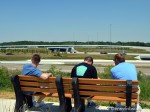
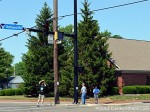 For the most part, though, the differences are a matter of degree and both “roadies” and “road geeks” are very friendly people who enjoy roads and each other. There are certainly some “roadies” who would cringe at the thought of looking over the recently reworked I-70 & I-75 interchange from a park bench but I’ve now seen members of both groups roaming around the former Dixie Highway & National Road intersection with cameras clicking. The sign being photographed is the “Crossroads of America” sign. The title has no shortage of claimants but both of these intersections are legitimate contenders. The DH and the NR, clearly major highways of their day, morphed into US-25 and US-40 respectively. I-75 is the interstate era successor to US-25 and I-70 is the successor to US-40.
For the most part, though, the differences are a matter of degree and both “roadies” and “road geeks” are very friendly people who enjoy roads and each other. There are certainly some “roadies” who would cringe at the thought of looking over the recently reworked I-70 & I-75 interchange from a park bench but I’ve now seen members of both groups roaming around the former Dixie Highway & National Road intersection with cameras clicking. The sign being photographed is the “Crossroads of America” sign. The title has no shortage of claimants but both of these intersections are legitimate contenders. The DH and the NR, clearly major highways of their day, morphed into US-25 and US-40 respectively. I-75 is the interstate era successor to US-25 and I-70 is the successor to US-40.
 From Dayton I headed over to Oxford, Ohio, for another show at the Big Song Music House. This one featured “The Georgia Songbird”, EG Kight. As she has for the other shows I’ve attended here, Lisa Biales, who owns Big Song Music House with her husband Marc, opened with a few tunes. Then EG took the stage and, in the intimate setting that seemed to fit her perfectly, entertained us with both music and conversation that triggered many smiles and several chuckles. Of course, smiles were not restricted to the time between tunes. EGs humor frequently shows up in her songs, too.
From Dayton I headed over to Oxford, Ohio, for another show at the Big Song Music House. This one featured “The Georgia Songbird”, EG Kight. As she has for the other shows I’ve attended here, Lisa Biales, who owns Big Song Music House with her husband Marc, opened with a few tunes. Then EG took the stage and, in the intimate setting that seemed to fit her perfectly, entertained us with both music and conversation that triggered many smiles and several chuckles. Of course, smiles were not restricted to the time between tunes. EGs humor frequently shows up in her songs, too.

 Lisa is close friends with both acts, Ricky Nye and Ronstadt Generations, that I’ve seen here in the past and she joined each of them a few times during their performances. EG and Lisa are certainly friends and EG produced and contributed to Lisa’s most recent CD, Just Like Honey, but it’s probably the musical similarities that makes their performing together something special. Both have powerful and clear voices, they both know their way around a guitar, and both are capable of delivering both real and lyrical winks. Lisa joined EG several times, both with and without her guitar, and the two powerful voices combined to produce some pow-pow-powerful harmonies.
Lisa is close friends with both acts, Ricky Nye and Ronstadt Generations, that I’ve seen here in the past and she joined each of them a few times during their performances. EG and Lisa are certainly friends and EG produced and contributed to Lisa’s most recent CD, Just Like Honey, but it’s probably the musical similarities that makes their performing together something special. Both have powerful and clear voices, they both know their way around a guitar, and both are capable of delivering both real and lyrical winks. Lisa joined EG several times, both with and without her guitar, and the two powerful voices combined to produce some pow-pow-powerful harmonies.
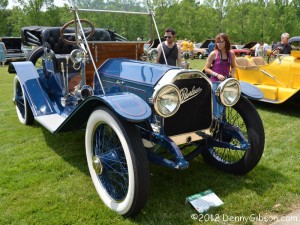 I took an overnight break before heading out to my third event of the weekend, the 35th Ault Park Concours d’Elegance in Cincinnati. In years past, I’ve parked as close as I could (which never seemed to be very close) and trudged up the hills to the Concours. This year a friend and I took advantage of the free offsite parking and shuttle. Not a bit of trudging and the fact that the shuttle buses were air-conditioned was deeply appreciated after we had walked all over the grounds and were heading back to the car.
I took an overnight break before heading out to my third event of the weekend, the 35th Ault Park Concours d’Elegance in Cincinnati. In years past, I’ve parked as close as I could (which never seemed to be very close) and trudged up the hills to the Concours. This year a friend and I took advantage of the free offsite parking and shuttle. Not a bit of trudging and the fact that the shuttle buses were air-conditioned was deeply appreciated after we had walked all over the grounds and were heading back to the car.
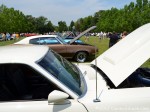
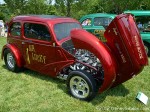 There were plenty of “normal” concours vehicles like Duesenburgs, and Hudsons and brass era cars such as the 1914 Packard above, but the title of this year’s event was A Century of American Power so there were also some cars on display that you might not immediately think of when you hear Concours d’Elegance. Prominent among these were 1960s & ’70s muscle cars and dragsters from the same period.
There were plenty of “normal” concours vehicles like Duesenburgs, and Hudsons and brass era cars such as the 1914 Packard above, but the title of this year’s event was A Century of American Power so there were also some cars on display that you might not immediately think of when you hear Concours d’Elegance. Prominent among these were 1960s & ’70s muscle cars and dragsters from the same period.
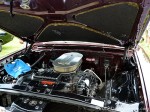
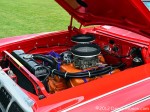
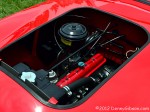
Prime examples of Detroit muscle are the 427 CI 425 HP V8 in a 1964 Ford Galaxy and the 426 CI 425 HP (for insurance purposes) V8 in a 1963 Dodge Polara. That’s Cincinnati muscle in the third picture. The 44 CI 26.5 HP I4 in a 1951 Crosley Hotshot might not seem like a symbol of …American Power but it was a Hotshot that won, through handicapping, the first Sebring Endurance Race in 1950.
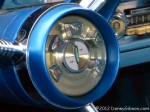 This picture might make you think that texting while driving was encouraged back when the alphabet was smaller but it is actually the push-button transmission controls in a 1958 Edsel Citation.
This picture might make you think that texting while driving was encouraged back when the alphabet was smaller but it is actually the push-button transmission controls in a 1958 Edsel Citation.
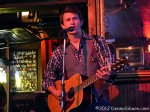 This is something of a bonus. Carey Murdock is another singer-songwriter I learned of through Josh Hisle. He lives in Nashville, Tennessee. I came close to connecting with him there last Christmas but missed and actually met him for the first time tonight as we both walked across the street to Mansion Hill Tavern. Carey had prearranged a stop at Mansion Hill as a “featured guest” which essentially means a half hour slot at a regularly scheduled blues jam with lots of musicians waiting to form groups and get some stage time. This is obviously not the best showcase situation but Carey handled it well and the crowd seemed to like him. I definitely did.
This is something of a bonus. Carey Murdock is another singer-songwriter I learned of through Josh Hisle. He lives in Nashville, Tennessee. I came close to connecting with him there last Christmas but missed and actually met him for the first time tonight as we both walked across the street to Mansion Hill Tavern. Carey had prearranged a stop at Mansion Hill as a “featured guest” which essentially means a half hour slot at a regularly scheduled blues jam with lots of musicians waiting to form groups and get some stage time. This is obviously not the best showcase situation but Carey handled it well and the crowd seemed to like him. I definitely did.
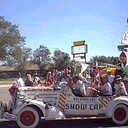 This picture is from my 1999 Rt66in99 road trip; The very first of my trips documented on the World Wide Web. A buddy and I were heading west to join a Corvette caravan that would be heading east to an anniversary party at the museum in Bowling Green, Kentucky. We had just stopped in Seligman, Arizona and I was getting my first exposure to Juan Delgadillo’s bag of tricks when several Corvettes, traveling to the party on their own schedule, pulled up. Some teasing banter between Juan and the women in the group soon led to Juan firing up the Snow Cap Mobile and treating some of them to a wild and breezy ride up and down Route 66 in the heart of Seligman. Although I visited Juan a couple more times before his passing in 2004, this is the only time I ever saw the Christmas tree totting 1936 Chevrolet in motion.
This picture is from my 1999 Rt66in99 road trip; The very first of my trips documented on the World Wide Web. A buddy and I were heading west to join a Corvette caravan that would be heading east to an anniversary party at the museum in Bowling Green, Kentucky. We had just stopped in Seligman, Arizona and I was getting my first exposure to Juan Delgadillo’s bag of tricks when several Corvettes, traveling to the party on their own schedule, pulled up. Some teasing banter between Juan and the women in the group soon led to Juan firing up the Snow Cap Mobile and treating some of them to a wild and breezy ride up and down Route 66 in the heart of Seligman. Although I visited Juan a couple more times before his passing in 2004, this is the only time I ever saw the Christmas tree totting 1936 Chevrolet in motion.
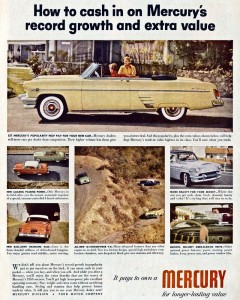
 When new, my car probably resembled the one at left. It never really did look all that bad and, unlike the Chevy before it, its engine just kept on going. But things were different underneath. I owned the car for less than a year and during that time the rear end lowered itself by a couple of inches due to rusting suspension. The floor pans had similar issues and the driver’s seat developed a noticeable rearward rake. I’m certain it was preparing to eject me downward at some point.
When new, my car probably resembled the one at left. It never really did look all that bad and, unlike the Chevy before it, its engine just kept on going. But things were different underneath. I owned the car for less than a year and during that time the rear end lowered itself by a couple of inches due to rusting suspension. The floor pans had similar issues and the driver’s seat developed a noticeable rearward rake. I’m certain it was preparing to eject me downward at some point.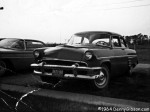
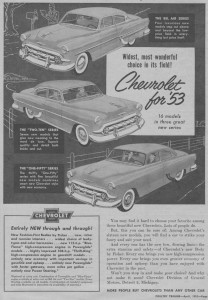
 My car was a green and white Bel Air that looked a lot like the car at left. Exceptions were that mine was a 4-door and it never looked nearly that shiny while I owned it. Late in the summer I threw a rod and did my first engine swap with something out of a wreck. During the winter, the front got a little wrinkled when I was intentionally doing donuts in the snow and unintentionally found a guard rail in my path. When the rods in my junkyard engine started knocking in the spring, the Chevy was done.
My car was a green and white Bel Air that looked a lot like the car at left. Exceptions were that mine was a 4-door and it never looked nearly that shiny while I owned it. Late in the summer I threw a rod and did my first engine swap with something out of a wreck. During the winter, the front got a little wrinkled when I was intentionally doing donuts in the snow and unintentionally found a guard rail in my path. When the rods in my junkyard engine started knocking in the spring, the Chevy was done.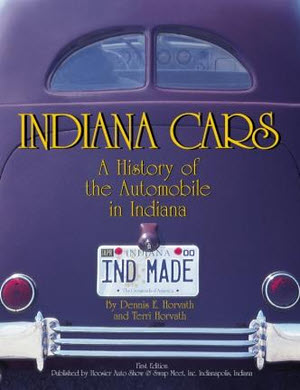 Yes, I am late to the party. This book on Indiana’s automotive history was published in 2002 but, since it’s about old cars, none of the history has changed and the cars have only gotten older.
Yes, I am late to the party. This book on Indiana’s automotive history was published in 2002 but, since it’s about old cars, none of the history has changed and the cars have only gotten older.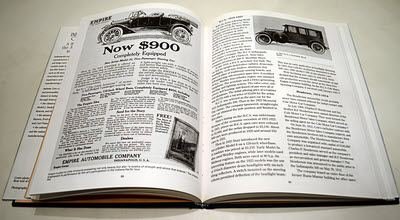 Once the background is set, the book moves onto the various manufacturers. Not every mark ever built in the state is covered but there are sizable sections on what the Horvaths consider “Significant Automobiles”. The reading isn’t so dry now. There are fairly lengthy articles on the likes of Duesenberg and Studebaker and shorter ones on others. The book is well illustrated with photographs and clippings from period literature. Facts are seasoned with entertaining anecdotes. Joe Cole got his first car running and took off without installing the brakes. Lack of fuel finally stopped it after many laps around Monument Circle in Indianapolis. In 1891, Charley Black’s six-block drive in a Benz included crashing into both a surrey and a shop window. Those were the good old days.
Once the background is set, the book moves onto the various manufacturers. Not every mark ever built in the state is covered but there are sizable sections on what the Horvaths consider “Significant Automobiles”. The reading isn’t so dry now. There are fairly lengthy articles on the likes of Duesenberg and Studebaker and shorter ones on others. The book is well illustrated with photographs and clippings from period literature. Facts are seasoned with entertaining anecdotes. Joe Cole got his first car running and took off without installing the brakes. Lack of fuel finally stopped it after many laps around Monument Circle in Indianapolis. In 1891, Charley Black’s six-block drive in a Benz included crashing into both a surrey and a shop window. Those were the good old days.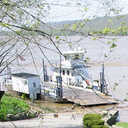
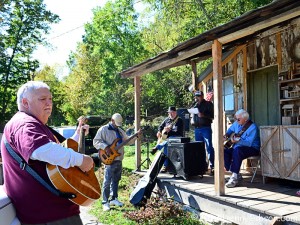
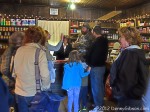
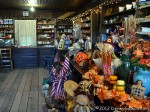
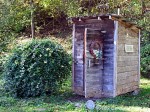
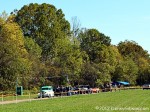
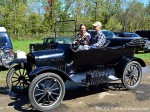
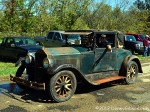
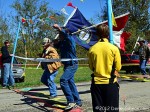
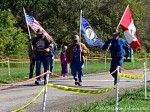
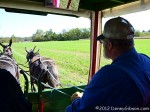
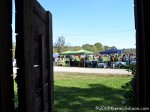
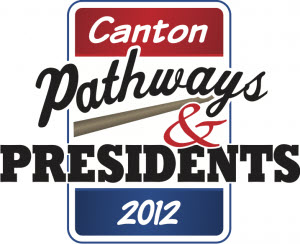


















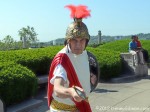
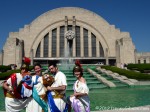
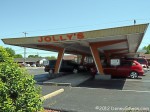
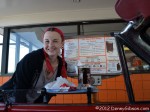
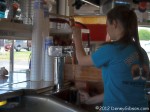
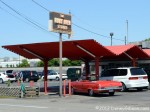
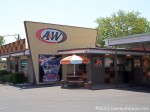

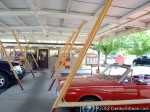
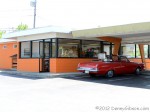
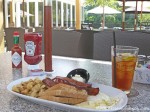
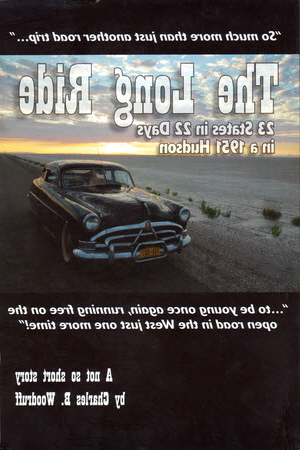 So now that I’ve explained why I don’t like to post viewer stats, here are some hidden in a paragraph for folks who bother to read outside the bullet list. For 2011, the entire website had 43,213 visits with 227,060 page views. The most popular page was the
So now that I’ve explained why I don’t like to post viewer stats, here are some hidden in a paragraph for folks who bother to read outside the bullet list. For 2011, the entire website had 43,213 visits with 227,060 page views. The most popular page was the